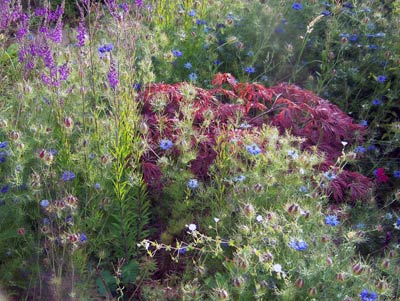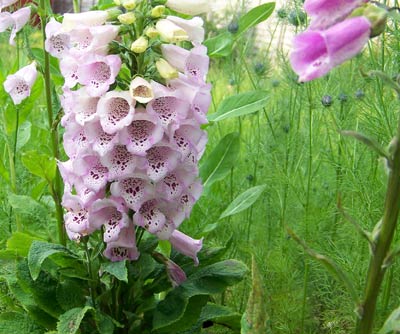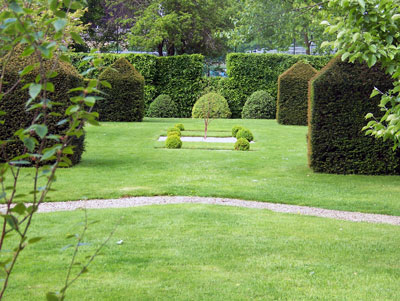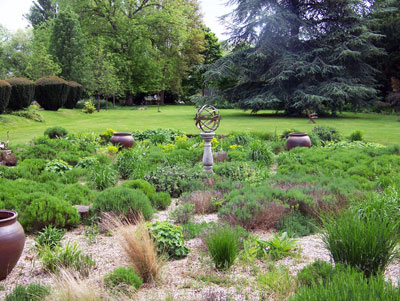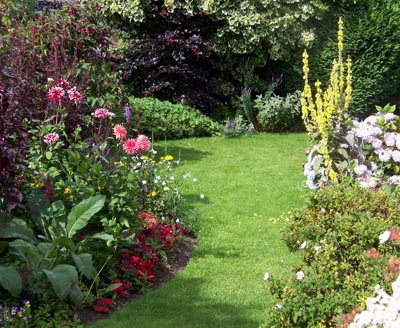Moss will recur if the growing conditions are not changed. Killing moss is not a one time operation. Moss stultifies other plants.
Help Moss Control on Pots
- On newly purchased pots of trees, shrubs or perennials there is often a growth of moss. Remove it to avoid importing new problems into your garden.
- Peel moss and weeds off the top of the pot and bury it 12″ deep.
- Moss on patio pots needs to be removed annually in spring. I then top dress the pots with new compost.
- Covering with grit or pebbles will control the moss.
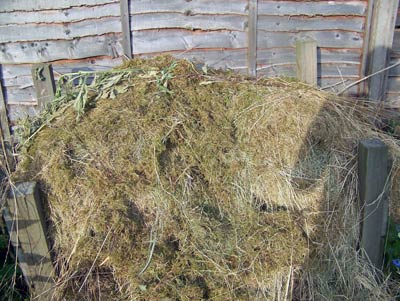
Readers Question: Is it OK to Compost Moss?
‘I have just been raking a lot of moss from my lawn. It’s surprising how much moss I was able to rake off and naturally I would like to compost it.’ Then I want to cure the problem.
Like any organic matter, moss will compost down and make compost over time but it may take a long time!. However composting is not a good cure and I would avoid putting it on my heap for fear of spreading the moss around.
I would dig a hole under my runner bean trench and bury the moss at least 12″ deep.
One trick, as with any composting is to mix it with other materials, such as grass clippings and woodier plant stems. If mixed together the moss should compost down depending on how well watered and aerated the compost heap is. Moss grows from spores and it is possible they will not be killed by the heat in your compost bin.
Other uses for moss include lining the inside of hanging baskets. These days, artificial linings are used, but, moss has many properties including water retention which make it excellent for lining an hanging basket
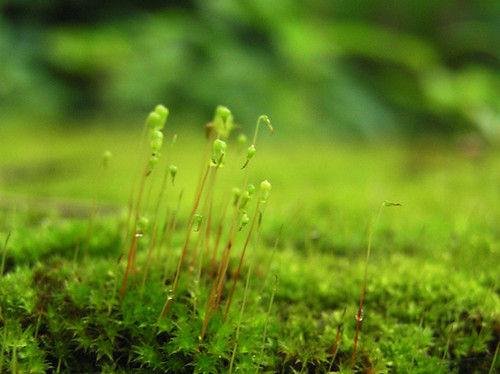
Background Facts on Moss
- There are thousands of different types of moss.
- Mosses are used on green roofs due to, reduced weight loads, increased water absorption, no fertilizer requirements, and high drought tolerance.
- Mosses do not have true roots so do not absorb water or nutrients from soil.
- Some mosses grow on trees but are not parasitic on the tree.
- Moss can be used in bonsai to cover the soil and enhance the impression of age.
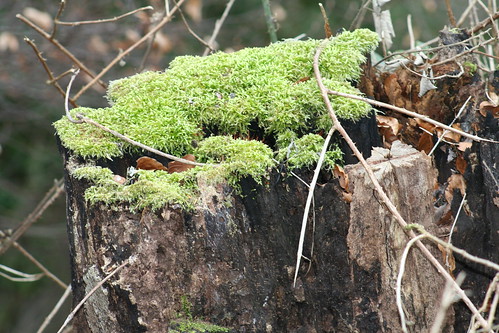
Help with Problems & Cures for Moss
- Moss can colonise a badly drained or compacted lawn and look unsightly.
- Unwanted moss can grow on paths and roofs.
- Moss growth on seed pots can smother seedling emergence.
- Moss growth can be inhibited by
Cutting the supply of water through better drainage.
Increasing direct sunlight.
Increasing the soil pH with the application of lime.
Regular hoeing and disturbing the soil around the moss with a rake
Application of chemicals such as ferrous sulfate (e.g. in lawns) or bleach (e.g. on solid surfaces).
Encourage and help competitive plants like grasses.
Top dress plants in containers with sand, gravel, and rock chips for faster drainage to discourage moss growth.
Chemicals products containing ferrous sulfate or ferrous ammonium sulfate will kill moss.
Credits
Moss 01 by Enygmatic-Halycon CC BY-SA 2.0
Moss on tree stump by Pete Reed CC BY-NC 2.0
Moss peat and other products from Amazon

Moss Gardening: Including Lichens, Liverworts and Other Miniatures by George Schenk





